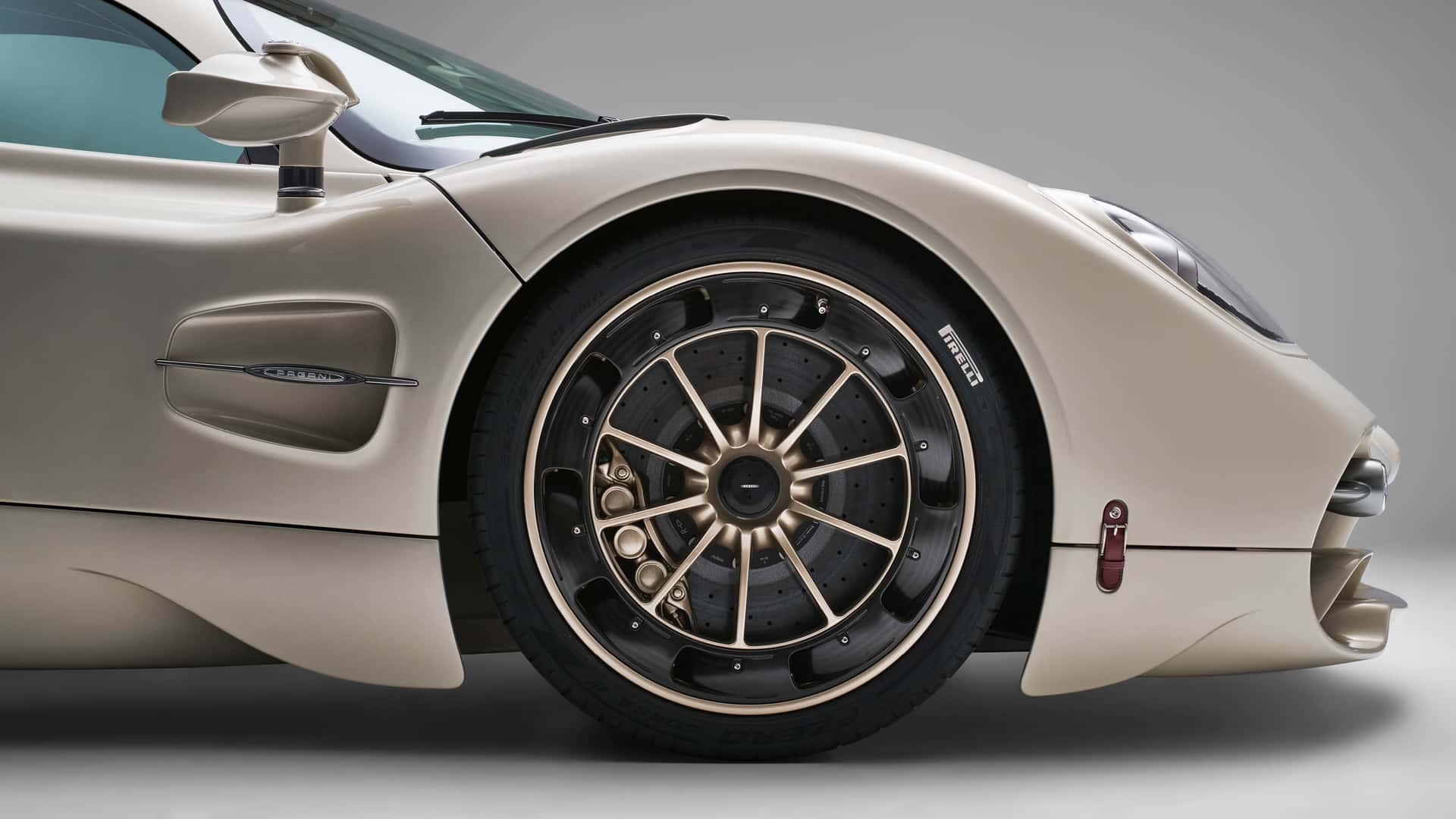
PIRELLI'S NEW CYBER TIRES CAN TALK TO YOUR CAR
Well, if your car is a Pagani Utopia.
Today’s cars know a lot, but not everything. When it comes to tires, a car’s computer knows very little about what’s attached to its hubs. A car’s brain knows there are tires there, and it knows tire pressures, but everything else is just an educated guess. Pirelli’s new Cyber Tires use Bluetooth-connected sensors to communicate directly with the car, offering some fascinating possibilities.
Introduced on the Pagani Utopia, these Pirellis can actually communicate with the car’s traction control, stability control, and ABS systems. Essentially, the Utopia knows which specific tire is fitted, and it can adjust all the electronic systems to a specific program designed around that tire.
The Pirelli Trofeo RS for the Pagani Utopia
Piero Misani, Pirelli’s Chief Technical Officer, shared an example with Motor1.
Under ABS braking, the Utopia’s Trofeo RS tires generate the most grip with around 5 percent wheel slip, but the car’s Sottozero winter tires need much more slip, about 10 to 14 percent. Normally, a car’s ABS system has to be tuned in a way that it works with any number of different tires, but this sacrifices the ultimate performance of a specific tire.
With the Cyber Tires, this doesn’t have to be the case.
“If you're able to recognize that the tire is a Trofeo or a winter, you can tell the ABS, ‘Use this map. Use these characteristics,’” Misani said. The same is true with the traction and stability control systems.
“We've been eager to get this for our cars for a long time,” Christopher Pagani, son of founder Horacio and the company’s marketing director, told Motor1. “We strongly believe that there is a way to improve how the car behaves on the road while you're doing all the different kinds of speeds, rain, winter, whatever.”
Pirelli Cyber Tire sensor
With the Cyber Tires, the vehicle can also assess tire age and wear rate. This can be used simply to flash up a message on the dash suggesting the owner it's time to change their tires, or in the future, to make adjustments to the car’s electronic driving aids.
All this is interesting on its own, promising great things for future vehicle dynamics, but this merely scratches the surface of possibilities. For starters, these tires help Pirelli in making better products in the future, because tire sensors can collect tons of data during a car’s development phase.
You can collect data on a tire from a dynamometer, but as Misani explained, dynamometric wheels are heavy, so your data is only so good.
“A sensor inside the tire does not change anything, we measure the real conditions,” he said.
So you get better data, which you can feed back into the development process creating a virtuous cycle. Pirelli can also collect data on tires used in customer vehicles, giving the company a better look at driving styles, real-world mileage, and so much more. All of which aids in future tire development.
So much of modern car development happens in simulation, but one of the hardest things to simulate is tires. It’s why platforms like iRacing put so much effort into refining tire models. With more and clearer data, you can create better tire models, and that translates into better tires.
But what’s really, really interesting is what Misani calls the “version 2.0” of the Cyber Tire.
The aim is to use one or multiple sensors to estimate exact grip levels, and to dig into what’s happening underneath the tire’s contact patch. Misani calls this a “state estimator.” The idea is to provide this information to the car’s other systems, optimizing performance to a very high degree. This is a way’s off, though, but it’s where Pirelli is headed.
The more data a car has about what’s happening at the tire, the better it can tune its systems to suit. Today, a car has to extrapolate the forces the tire experiences based on things like wheel-speed sensors, tire-pressure sensors, and inertial measurement units looking at yaw rate, pitch, dive, roll, etc. You can arrive at a good conclusion based on all this, but it is, ultimately, a guess.
The very best modern performance cars integrate all sorts of systems—powertrain, differential, brakes, suspension, and more—to achieve the desired performance. With real-time information from the tires, the only part of the car that touches the ground, the car can make more effective choices.
Misani said this would require more sensors. With one sensor, you can measure the length of the contact patch, which Pirelli uses to detect aquaplaning, but to measure slip angle, you need to know both the length and shape of the contact patch.
As of right now, Pirelli has Cyber Tires in the McLaren Artura, Audi RS4, and the Pagani Utopia, but only in the Pagani does the car change its traction/stability control and ABS maps to suit the tire fitted. In the other two, the tires just tell the car the OE tire is equipped.
So, it’s still early days, but the mind reels with the possibilities. A Pagani hypercar that tailors itself to suit street, track, and winter tires is huge. But that’s just the beginning.
More on Pirelli
2024-07-25T18:28:22Z dg43tfdfdgfd